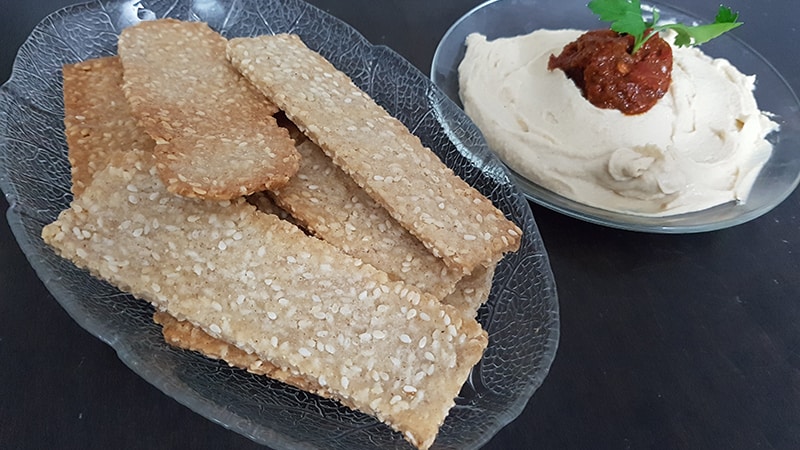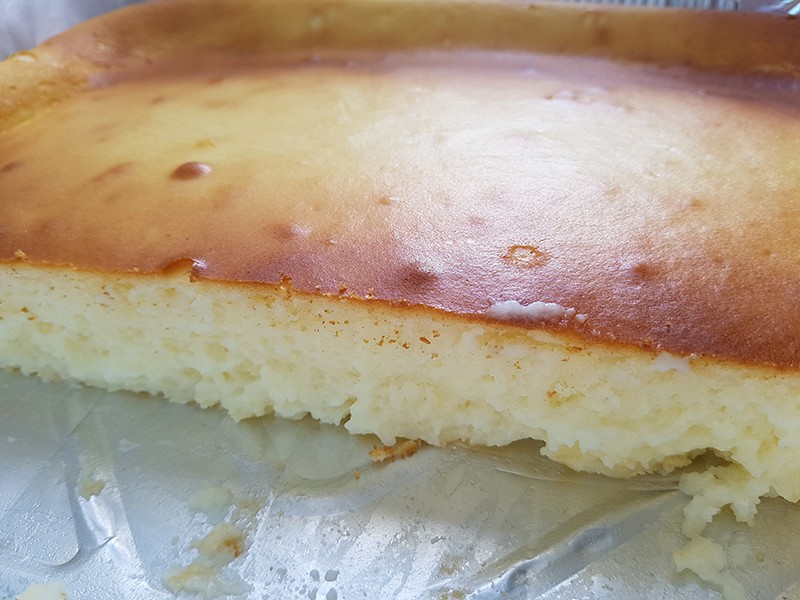Plastic & stainless . As it turned out, the virus is most quickly deactivated on a ceramic surface. "Doing experiments inside a lab where humidity is controlled is one thing. The Environmental Protection Agency, for instance, states on its website that the spread of COVID may "sometimes occur through contact with contaminated surfaces, though this route is now considered less likely.". Saudi Gazettesaid that its high stability might be one of the causes that allowed the Omicron version to replace the Delta variant and spread fast, the scientists stated. Japanese researchers claim that the Omicron COVID-19 variant may live longer on plastic surfaces and human skin than earlier strains of the virus. These results dont prove that were at increased risk of picking up the Omicron variant from surfaces. However, under "typical indoor environmental conditions . Other members of the scientific and medical community also had mixed views on what this new study actually tells us about how Omicron spreads. "These results don't prove that we're at increased risk of picking up the Omicron variant from surfaces," Valley said. Hassan Vally does not work for, consult, own shares in or receive funding from any company or organisation that would benefit from this article, and has disclosed no relevant affiliations beyond their academic appointment. On porous surfaces, studies report inability to detect viable virus within minutes to hours; on non-porous surfaces, viable virus can be detected for days to weeks. Health experts have agreed that the SARS-CoV-2 coronavirus causing COVID-19 is mostly transmitted through the air. Understanding the role of the different infection pathways plays a vital role in prioritising what we should be doing to prevent disease. How long does omicron last on surfaces and in the air? Officials have earlier suggested Covid may have come into the country through frozen food. "It is notoriously good and probably one of the most efficient viruses many people have seen, at least in their lifetime . People can be infected with SARS-CoV-2 through contact with surfaces. Because it can stay intact in the soil, on various materials like plastic and steel, its important to consider how it factors into risk of infection. All information these cookies collect is aggregated and therefore anonymous. All rights reserved. On plastic surfaces, average survival times of the original strain and the Alpha, Beta, Gamma and Delta variants were 56 hours, 191.3 hours, 156.6 hours, 59.3 hours, and 114.0 hours,. Cleaning reduces the amount of soil (e.g., dirt, microbes and other organic agents, and chemicals) on surfaces, but efficacy varies by the type of cleaner used, cleaning procedure, and how well the cleaning is performed. But what it does do is confirm that wiping down surfaces and hand sanitising with disinfectants are effective methods of killing any live virus that may be lurking there. Some types of disinfection applications, particularly those including fogging or misting, are neither safe nor effective for inactivating the virus unless properly used 24. The Link Between Fasting And Mental Health: Can It Improve Mood And Cognition? An early CDC study, released on Tuesday, examined an Omicron cluster in Nebraska and found that the time between exposure and infection - known as the incubation period - may be around three. 2004-2023 Healthline Media UK Ltd, Brighton, UK, a Red Ventures Company. This study did not include other variants like delta in the experiments. Omicron in particular was the most stable of the variants studied. 24, 2022. The Centers for Disease Control and Prevention (CDC) cannot attest to the accuracy of a non-federal website. So perhaps we can ease up on the disinfecting, Associate Lecturer, Creative Writing and Literature, Lecturer / Senior Lecturer, Emerging Technologies, Committee Member - MNF Research Advisory Committee. The next highest was the Alpha variant at 191.3 hours, while the Wuhan strain lasted just 56 hours. Sign up to receive our top stories and key topics related to vaccination, including those related to the COVID-19 pandemic. No reported studies have investigated the efficacy of surface cleaning (with soap or detergent not containing a registered disinfectant) for reducing concentrations of SARS-CoV-2 on non-porous surfaces. COVID-19. Certain techniques can improve the fit and filtration effectiveness of masks 32. The two most recent major variants of the SARS-CoV-2 virus have proven to be more. Only 24 hours after infection, the difference was noticeable. This could contribute to its increased infectiousness but the extent of any increase in the amount of surface transmission, the relative contribution of surface transmission to Omicron infections, and what causes this enhanced environmental stability are key questions that were beyond the scope of the study. The Omicron variant again outlasts the other variants, surviving for 21.1 hours. Findings of these studies suggest that the risk of SARS-CoV-2 infection via the fomite transmission route is low, and generally less than 1 in 10,000, which means that each contact with a contaminated surface has less than a 1 in 10,000 chance of causing an infection 7, 8, 9. However, it is not clear what proportion of SARS-CoV-2 infections are acquired through surface transmission. The main way people get infected, most leading public health officials and scientists now agree, isthrough exposure to this virus through the air, not through contaminated surfaces known scientifically as "fomites.". said the study was limited by a lack of a clear rationale for the amount of virus deposited to the surfaces, and the fact that it was was carried out under highly-controlled lab conditions rather than real-world conditions. Quantitative microbial risk assessment (QMRA) studies have been conducted to understand and characterize the relative risk of SARS-CoV-2 fomite transmission and evaluate the need for and effectiveness of prevention measures to reduce risk. To receive email updates about COVID-19, enter your email address: We take your privacy seriously. It is a priority for CBC to create products that are accessible to all in Canada including people with visual, hearing, motor and cognitive challenges. From studies of cleaning focused on other microbes, a 9099.9% reduction of microbe levels could be possible depending on the cleaning method and the surface being cleaned 17, 18. Science Brief: SARS-CoV-2 and Surface (Fomite) Transmission for Indoor Community Environments, Centers for Disease Control and Prevention. Millions of people in China have been forced into lockdown, ordered to stay home to protect themselves from the countrys biggest COVID-19 outbreak in two years. The most important limitation of the study, and one that is shared with similar survivability studies published earlier in the pandemic, is generalising survival times in the laboratory to survival times in the real world. The Gamma variant survives for 59.3 hours. More than 95 percent of the virus was gone from the stainless steel surface after 24 hours. By submitting a comment, you accept that CBC has the right to reproduce and publish that comment in whole or in part, in any manner CBC chooses. Building off other recent research which showed Omicron's heavily-mutated spike protein is more stable than the ancestral strain, and their own previous findings on SARS-CoV-2's level of infectiousness on various surfaces, the Hong Kong team explored what would happen if droplets containing Omicron the BA.1 lineage, specifically were applied to surfaces like stainless steel, paper, and glass. The research found that the COVID-19 Omicron variant had the highest environmental stability among VOCs. Disinfection is recommended in indoor community settings where there has been a suspected or confirmed case of COVID-19 within the last 24 hours. After a person with suspected or confirmed COVID-19 has been in an indoor space, the risk of fomite transmission from any surfaces is minor after 3 days (72 hours). The length of time virus remains suspended and is infectious depends on numerous factors, including viral load in respiratory droplets or in small particles, disturbance of air and surfaces, ventilation, temperature, and humidity 27, 28, 29, 30, 31. Depending on the strain of the virus and environmental factors, infected individuals may be more or less likely to become reinfected. When a person with suspected or confirmed COVID-19 has been indoors, virus can remain suspended in the air for minutes to hours. In public spaces and community settings, available epidemiological data and QMRA studies indicate that the risk of SARS-CoV-2 transmission from fomites is lowcompared with risks from direct contact, droplet transmission or airborne transmission 8, 9. We can't say whether longer Omicron survivability on surfaces relates to a greater risk of infection. Terrifying, Pre-Historic-Looking Fish Captured in the Ocean's Twilight Zone; What Is It? Can the virus survive in the air even after an infected person has left a room? One QMRA study also evaluated the effectiveness of prevention measures that reduce the risk of fomite transmission and found that hand hygiene could substantially reduce the risk of SARS-CoV-2 transmission from contaminated surfaces, while surface disinfection once- or twice-per-day had little impact on reducing estimated risks 9. The Omicron variant survives longer on plastic surfaces and skin than other variants, increasing the likelihood of it spreading through touch. Nevertheless, some challenges remain. Whats inferred is that this longer survival on these surfaces contributes to Omicrons increased infectivity, because theres more likelihood of picking up viable virus from surfaces. America is changing fast! The omicron variant lasted 193.5 hours. Is the ketogenic diet right for autoimmune conditions? It is reasonable to speculate real world conditions would be harsher and more changeable in terms of temperature and humidity which may reduce virus survival times considerably. It's also not clear exactly how much virus is needed for a productive SARS-CoV-2 infection, Banerjay said, with more research needed. On a plastic surface, it survived for as long as 193.5 hours. The results from these two studies are in line with previous studies. This study did not include other variants like delta in the experiments. Even so, he said the findings suggest it's worth being cautious. For live updates on the latest developments regarding COVID-19, click here. "Certainly I don't want to see people going back to wiping their groceries down with disinfectants and leaving things sitting for days on end in the hope that what virus might be there isn't going to infect them. Add some good to your morning and evening. If the surface isn't porous, like glass, stainless steel or plastic, studies have been able to detect the virus after days or weeks. These cookies perform functions like remembering presentation options or choices and, in some cases, delivery of web content that based on self-identified area of interests. The variants investigated in the study were the original Wuhan strain, as well as the Alpha, Beta, Gamma, Delta, and Omicron variants, which have been designated as variants of concern. BA.2 OMICRON SUBVARIANT NEARLY 35 PERCENT OF U.S. CORONAVIRUS CASES, EXERCISE COULD TREAT SYMPTOMS OF LONG-COVID, RESEARCHERS SAY, NASAS MARS HELICOPTER WILL CONTINUE FLYING ON RED PLANET, WOLVERINE CAPTURED, COLLARED IN ONCE-IN-A-LIFETIME EXPERIENCE FOR UTAH RESEARCHERS, HEAVY ALCOHOL USE LINKED TO 232M MISSED WORKDAYS IN US EACH YEAR, THE HILL 1625 K STREET, NW SUITE 900 WASHINGTON DC 20006 | 202-628-8500 TEL | 202-628-8503 FAX. Early in the pandemic, researchers wanted to learn how long the coronavirus could live on surfaces. Virus survival time was calculated as time when they were no longer able to detect virus in the samples placed on the surfaces. In each instance, infectious amounts of Omicron were recovered for longer amounts of time than the samples of the original virus. Both cleaning (use of soap or detergent) and disinfection (use of a product or process designed to inactivate SARS-CoV-2) can reduce the risk of fomite transmission. CDC is not responsible for Section 508 compliance (accessibility) on other federal or private website. In the preprint study, Omicron survived over 20 hours on skin. Theoretically and not to suggest the researchers in this study did this you could contrive any survival time in the laboratory if you deposit enough virus at the outset. Relative humidity, temperature, and sunlight (UV) can be used to provide an estimated half-life for SARS-CoV-2 with this model with some degree of certainty. Over time weve seen a reduced emphasis on preventing surface transmission and a greater focus on preventing person-to-person and aerosol transmission. You will be subject to the destination website's privacy policy when you follow the link. The study found that the variants had more resistance to ethanol than the original strain of COVID. On plastic, the Omicron variant samples survived an average of 193.5 hours, a little more than 8 days. You can review and change the way we collect information below. If the surface isnt porous, like glass, stainless steel or plastic, studies have been able to detect the virus after days or weeks. A Chinese official claims Covid was found on a letter sent from Canada to a person first reported to have Omicron in China. Cardiovascular health: Insomnia linked to greater risk of heart attack. What is the latest research on the form of cancer Jimmy Carter has? This could contribute to its increased infectiousness but the extent of any increase in the amount of surface transmission, the relative contribution of surface transmission to Omicron infections, and what causes this enhanced environmental stability are key questions that were beyond the scope of the study. How long can the virus last on surfaces? Why it may be harder to catch COVID-19 from surfaces than we first thought, Acknowledge COVID-19 is airborne, Lancet report urges as more evidence mounts, Omicron subvariant BA.2 raises new questions about puzzling evolution of virus behind COVID-19, Why an Omicron infection alone might not offer the immune boost you'd expect.



